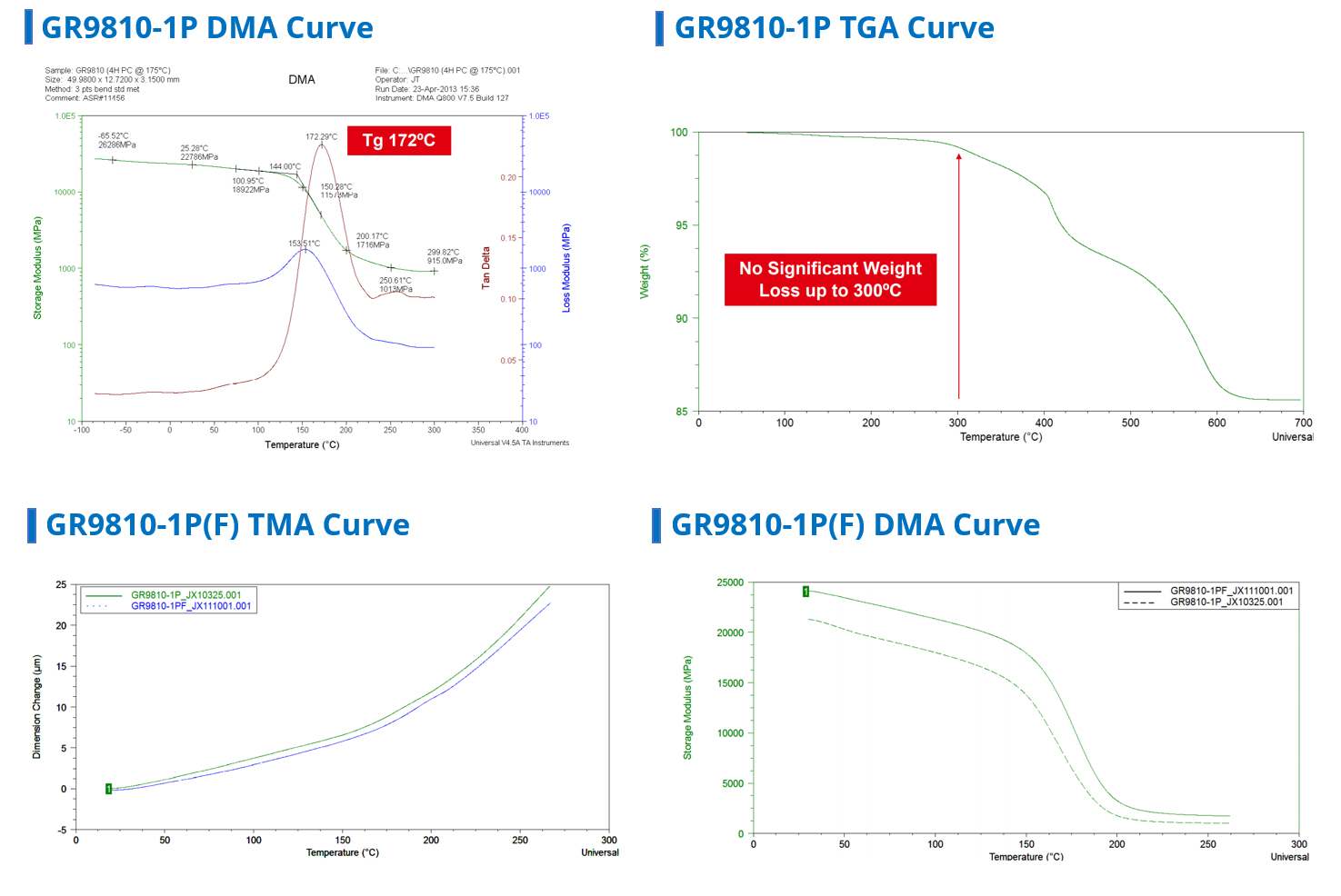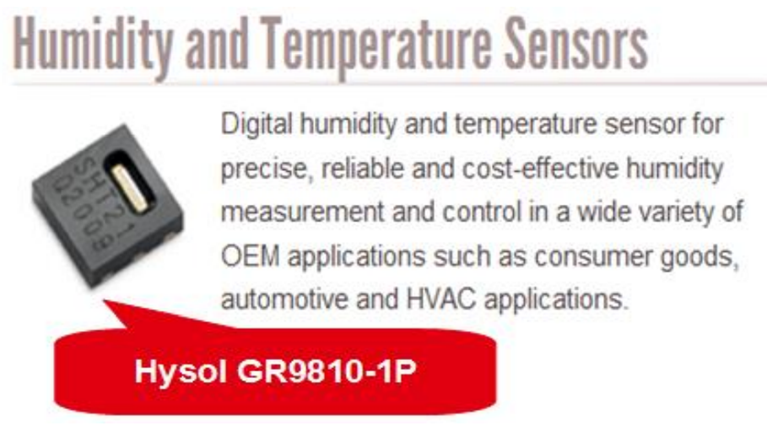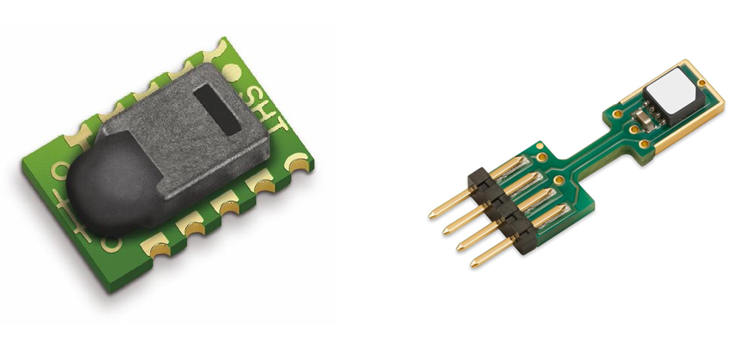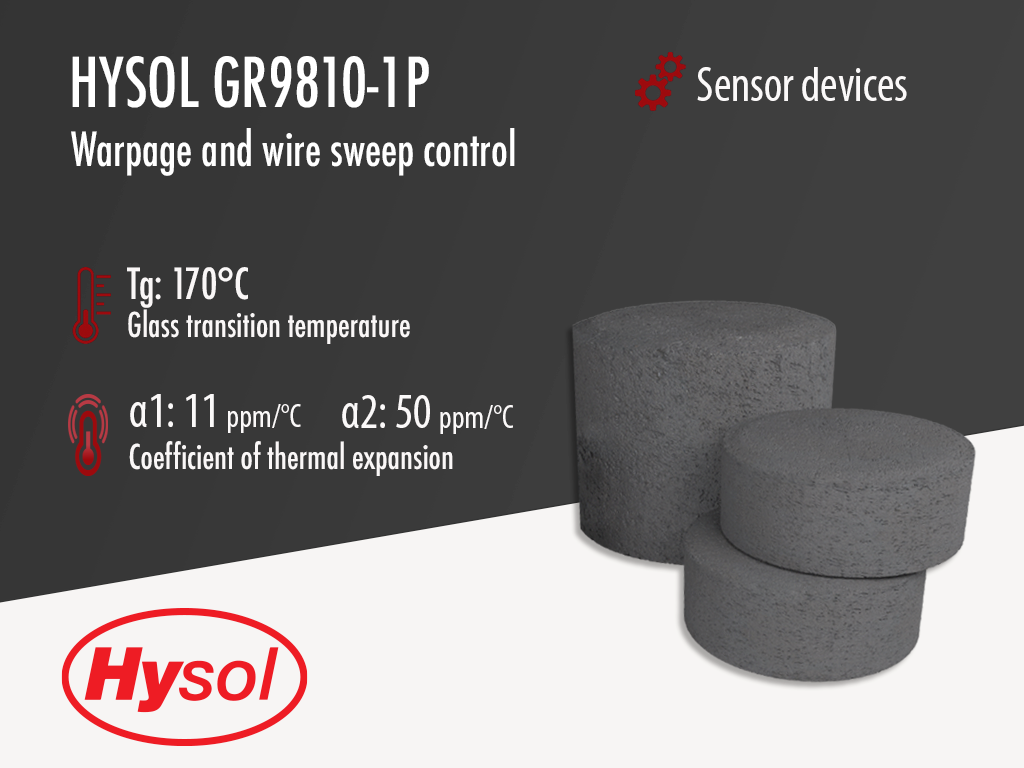Hysol GR9810-1P | Black Epoxy Mold Compound
- For sensors & modules
- Advanced warpage control
- Reliability and wire sweep control
Product Description
Hysol GR9810-1P is a heat curable, state of the art, black, semiconductor epoxy molding compound developed to meet the stringent encapsulation requirements of package on package (POP and SCSP). It has been formulated to provide the best possible moldability and as wide a molding latitude as possible. It is a Green, halogen free product with, excellent dimensional stability, low shrinkage and High Tg.
Hysol GR9810-1P and its related product GR9810-1PF offer a new technology platform on which Hysol develops epoxy mold compounds for high reliability sensors and modules such as humidity and temperature sensors. Key features of GR9810-1P are summarized as below.
Reliability
- Improved adhesion promoter and toughening system
- High filler loading (>85%) for lower moisture uptake
- Reduced moisture uptake for best MSL performance
Warpage Control
- Multifunctional resin hardener system with high Tg
- High cross-linking degree with special toughening system
- High filler loading for low CTE to minimize thermal mismatch
- High performance stress modifier to reduce internal stress
Wire Sweep Control
- Optimized filler PSD with 75um (-1P) or 45um (-1PF) filler cut
- Low viscosity resin and latent catalyst for ultra long flow
Hysol GR9810-1P is developed for advanced reliability control. The goal of this technology platform is to introduce an epoxy mold compound capable of passing MSL1 260°C on some devices and at least MSL3 260°C on a stacked CSP (PoP) devices. Check reliability test results and typical application Humidity Sensor.
Technical Specifications
| General Properties | |||||||||
| Color Color The color | Black | ||||||||
| Filler Content | 85 % | ||||||||
| Specific Gravity Specific Gravity Specific gravity (SG) is the ratio of the density of a substance to the density of a reference substance; equivalently, it is the ratio of the mass of a substance to the mass of a reference substance for the same given volume. For liquids, the reference substance is almost always water (1), while for gases, it is air (1.18) at room temperature. Specific gravity is unitless. | 1.95 | ||||||||
| |||||||||
| Physical Properties | |||||||||
| Spiral Flow @ 175°C | 150 cm | ||||||||
| Chemical Properties | |||||||||
| Moisture absorption | 0.27 % | ||||||||
| Mechanical Properties | |||||||||
| |||||||||
| |||||||||
| |||||||||
| Thermal Properties | |||||||||
| |||||||||
| |||||||||
| Glass Transition Temperature (Tg) Glass Transition Temperature (Tg) The glass transition temperature for organic adhesives is a temperature region where the polymers change from glassy and brittle to soft and rubbery. Increasing the temperature further continues the softening process as the viscosity drops too. Temperatures between the glass transition temperature and below the decomposition point of the adhesive are the best region for bonding. The glass-transition temperature Tg of a material characterizes the range of temperatures over which this glass transition occurs. | 170 °C | ||||||||
| Thermal Conductivity Thermal Conductivity Thermal conductivity describes the ability of a material to conduct heat. It is required by power packages in order to dissipate heat and maintain stable electrical performance. Thermal conductivity units are [W/(m K)] in the SI system and [Btu/(hr ft °F)] in the Imperial system. | 0.9 W/m.K | ||||||||
| UL 94 Rating UL 94 Rating Flammability rating classification. It determines how fast a material burns or extinguishes once it is ignited. HB: slow burning on a horizontal specimen; burning rate less than 76 mm/min for thickness less than 3 mm or burning stops before 100 mm V-2: burning stops within 30 seconds on a vertical specimen; drips of flaming particles are allowed. V-1: burning stops within 30 seconds on a vertical specimen; drips of particles allowed as long as they are not inflamed. V-0: burning stops within 10 seconds on a vertical specimen; drips of particles allowed as long as they are not inflamed. 5VB: burning stops within 60 seconds on a vertical specimen; no drips allowed; plaque specimens may develop a hole. 5VA: burning stops within 60 seconds on a vertical specimen; no drips allowed; plaque specimens may not develop a hole | V-0 | ||||||||
| Curing Conditions | |||||||||
| |||||||||
| |||||||||
| Transfer Pressure | 30 - 60 kg/cm2 | ||||||||
| Transfer Time | 15 - 20 s | ||||||||
Additional Information
GR9810-1P Internal Test Results
1. GR9810-1P has passed MSL3 3 x 260°C reliability test on large device.

2. GR9810-1P has high Tg and high temperature stability.

3. GR9810-1P has low viscosity and long flow for wide process window.

GR9810-1P Customer's Application
Sensor devices (such as our Smartlinq USB Temperature Data Loggers or our other Temperature Data Loggers) require precise, reliable and cost-effective humidity measurement and control. This allows them to be used reliability and effectively in a wide variety of applications such as consumer goods, automotive, logistics and HVAC applications. As such, GR9810-1P:
- Is used in variety of applications including mobile devices
- Passes 160ºC high temperature operating tests
- Passes MSL1& 1000 TC customer reliability
- Has the best adhesion on PPF lead frames
- Is compatible with Cavity and Film Assisted Molding process
Digital humidity and temperature sensors







